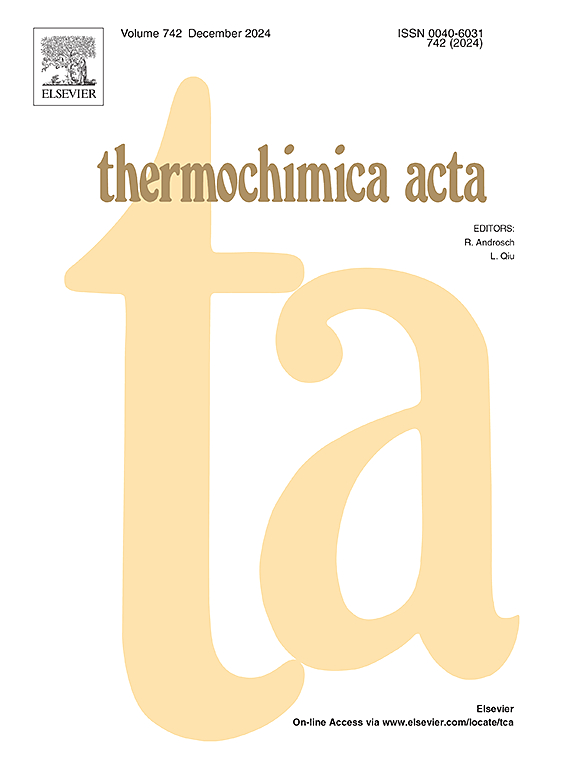A molecular dynamics-based study on the microstructural phase transition mechanisms of novel paraffin composite phase change materials
IF 3.1
2区 化学
Q2 CHEMISTRY, ANALYTICAL
引用次数: 0
Abstract
The thermodynamic mechanisms and properties of paraffin-based composite phase change materials at microscopic scale directly influence their potential applications in energy storage and conversion. This study employs molecular dynamics simulations to construct two models of composite phase change materials. Both experimental and simulation results demonstrate that, compared to two pure alkanes (n-octadecane and n-eicosane), thermal conductivity increases from 0.14 W/(m·K) to 0.31 W/(m·K) for the MOT (n-octadecane mixed with glycerol trimyristate) system and from 0.13 W/(m·K) to 0.27 W/(m·K) for the MET(n-eicosane mixed with glycerol trimyristate) system, indicating a twofold increase. Further investigation into thermodynamic properties, such as van der Waals energy, phase change temperature, and specific heat capacity, reveals microscopic interactions governing the phase transitions in the two binary composite systems. These findings enhance understanding of the molecular structural mechanisms during the phase change process in composite phase change material systems.
基于分子动力学的新型石蜡复合相变材料微观结构相变机理研究
石蜡基复合相变材料在微观尺度上的热力学机理和性能直接影响其在能量存储和转化方面的潜在应用。本研究采用分子动力学模拟方法构建了复合相变材料的两种模型。实验和模拟结果均表明,与两种纯烷烃(正十八烷和正二十烷)相比,MOT(正十八烷与甘油三酸酯混合)体系的导热系数从0.14 W/(m·K)增加到0.31 W/(m·K), MET(正二十烷与甘油三酸酯混合)体系的导热系数从0.13 W/(m·K)增加到0.27 W/(m·K),增加了两倍。进一步研究热力学性质,如范德华能、相变温度和比热容,揭示了控制两种二元复合体系相变的微观相互作用。这些发现增强了对复合相变材料体系相变过程中分子结构机制的认识。
本文章由计算机程序翻译,如有差异,请以英文原文为准。
求助全文
约1分钟内获得全文
求助全文
来源期刊

Thermochimica Acta
化学-分析化学
CiteScore
6.50
自引率
8.60%
发文量
210
审稿时长
40 days
期刊介绍:
Thermochimica Acta publishes original research contributions covering all aspects of thermoanalytical and calorimetric methods and their application to experimental chemistry, physics, biology and engineering. The journal aims to span the whole range from fundamental research to practical application.
The journal focuses on the research that advances physical and analytical science of thermal phenomena. Therefore, the manuscripts are expected to provide important insights into the thermal phenomena studied or to propose significant improvements of analytical or computational techniques employed in thermal studies. Manuscripts that report the results of routine thermal measurements are not suitable for publication in Thermochimica Acta.
The journal particularly welcomes papers from newly emerging areas as well as from the traditional strength areas:
- New and improved instrumentation and methods
- Thermal properties and behavior of materials
- Kinetics of thermally stimulated processes
 求助内容:
求助内容: 应助结果提醒方式:
应助结果提醒方式:


